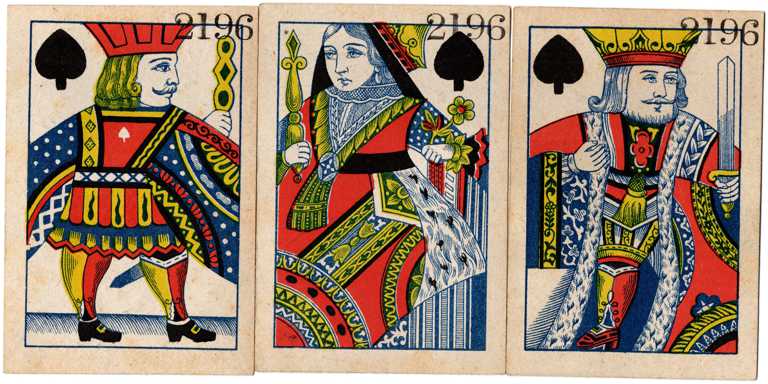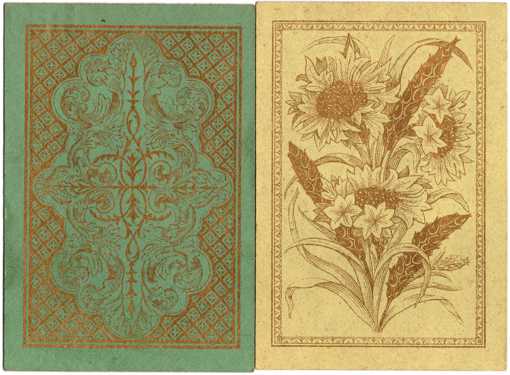
These are ... different. The number in the top-right corner is because they're samples (so presumably weren't subject to tax). They're in amazing condition, because they've never been played with. I don't have a full pack, but I do have:
8 Jacks of Hearts
2 Jacks of Clubs
5 Jacks of Diamonds
31 Jacks of Spades
11 Queens of Spades
3 Kings of Spades
I have no idea who manufactured these and only a vague idea when.

I was hoping to identify them from the patterns on the back, as one on Kings are different to the others so I have two to look for; I didn't have any luck, though. The closest I could find were Reynolds patterns, but they clearly weren't the same patterns.
Looking at the faces, the nearest match is the cut used by Antoine van Genechten, a Belgian manufacturer. Again, there are differences, but the expressions are similar (especially on the Kings).
The colouring of clothes varied between manufacturers and within manufacturers, so they're not much to go on. The most striking difference to the norm for these cards is the King's lower-left corner: there's a white triangle there that would normally be red, or at least red-striped. I don't know what's going on there.
The cards are square-cornered, full-length and unturned. This would normally date them as pre-1870, but there are complications. Single-figure court cards had largely been phased out by 1870 in the UK, but the Belgian manufacturers kept making them into the 1900s (usually under the "great mogul" brand used by many manufacturers on the grounds that it was popular and a trademark claim on the name had failed). Unturned cards (where there are pips top-right on some cards, such as the Queen of Spades) came out earlier in Belgium, but UK manufacturers had made the switch-over by 1870. Round corners came in in the late 1870s. Backs with fancy patterns on them came in in the 1840s and were widespread by the 1860s.
Overall, then, these are probably around 1870-1880, but could be as early as 1850 or as late as 1900. I'm very pleased with them!
That said, quite what I'm going to do with 31 Jacks of Spades I've yet to decide.